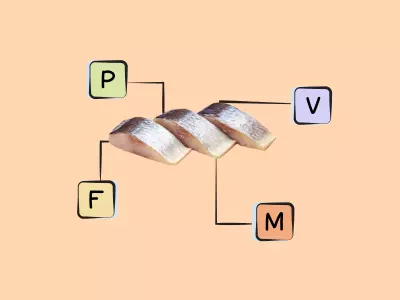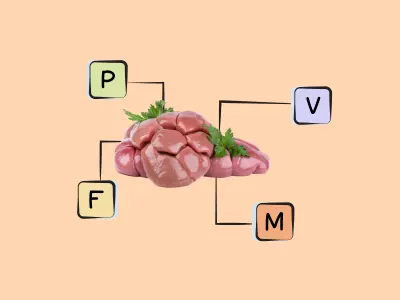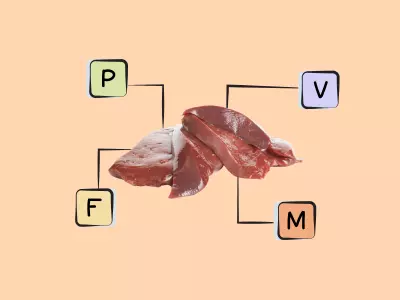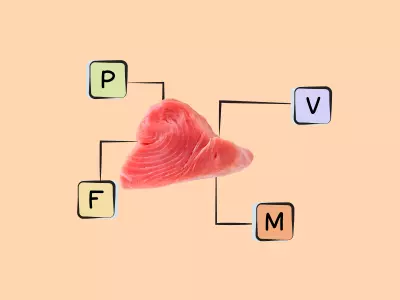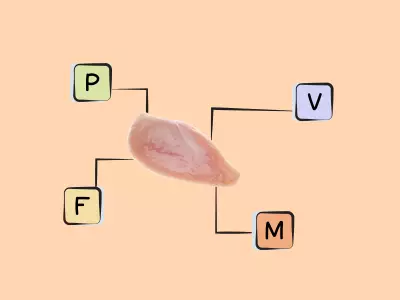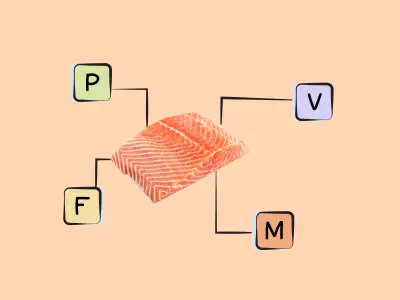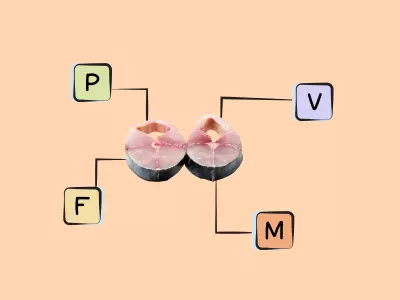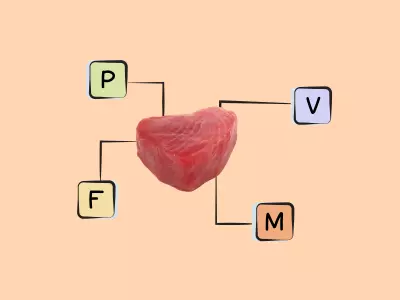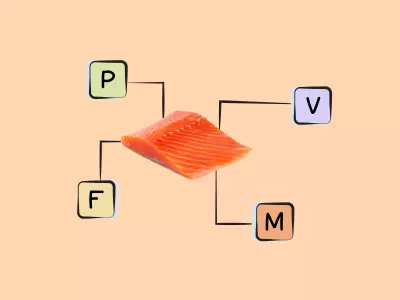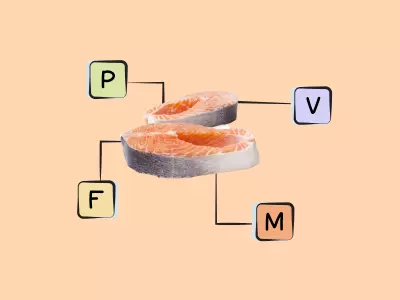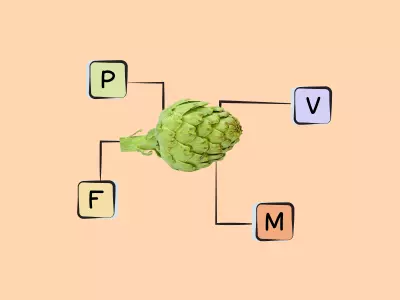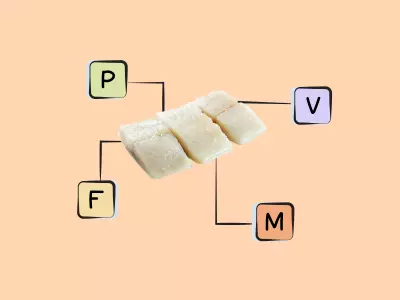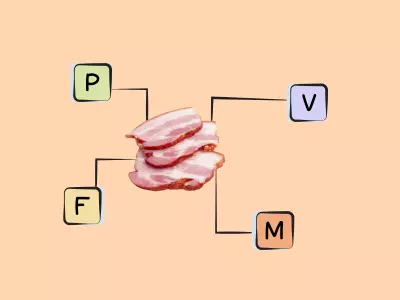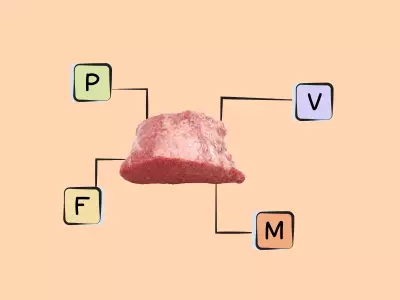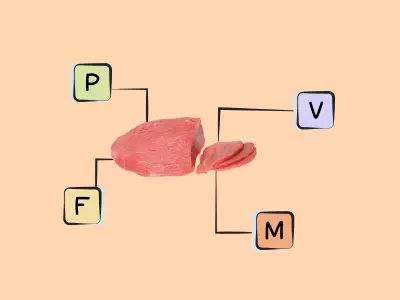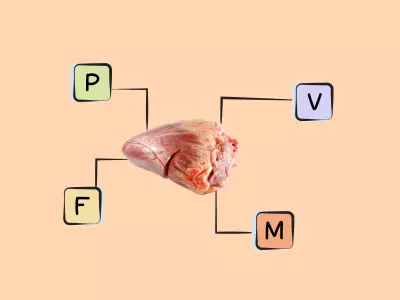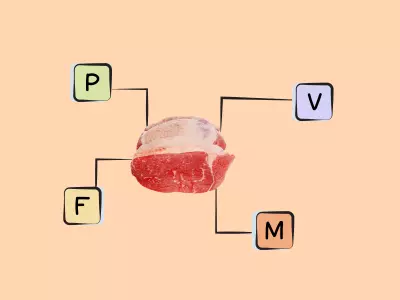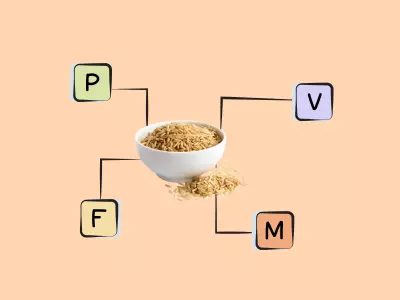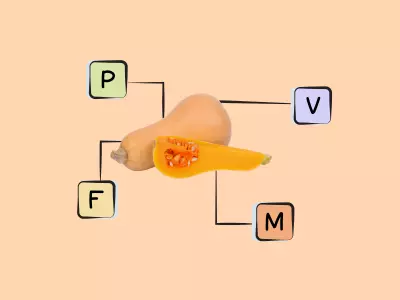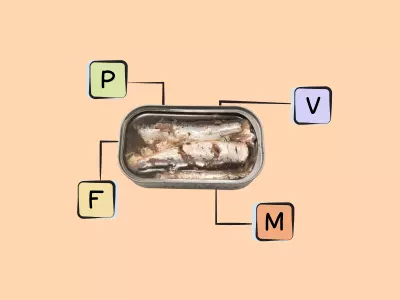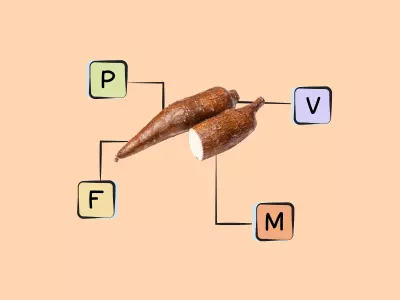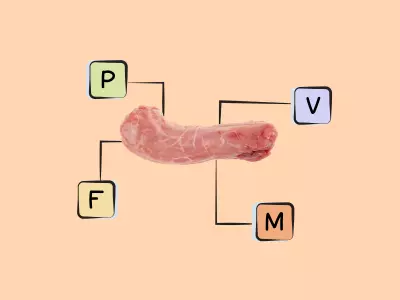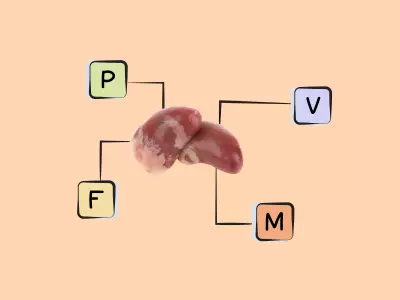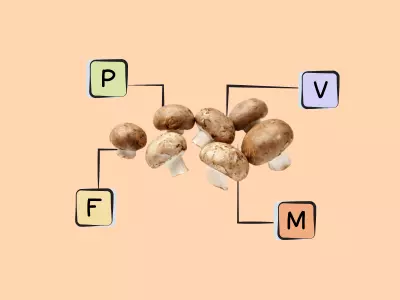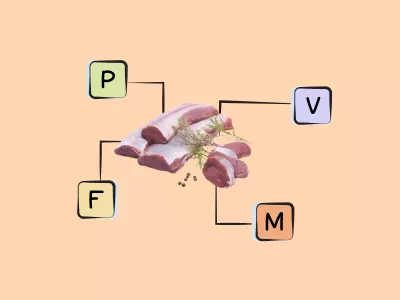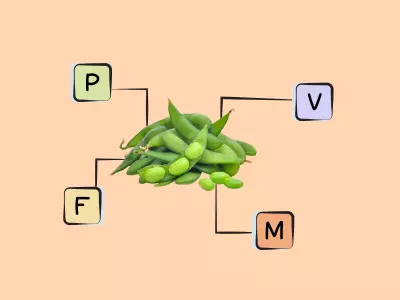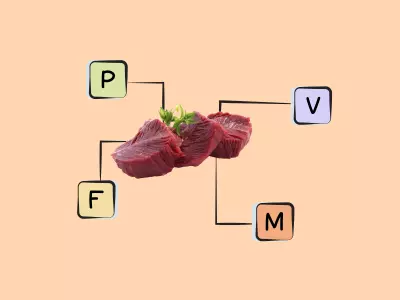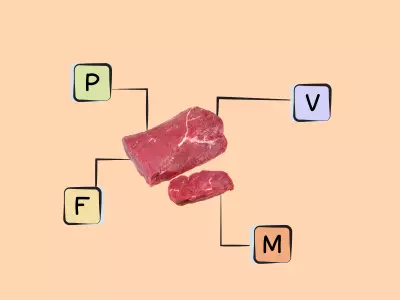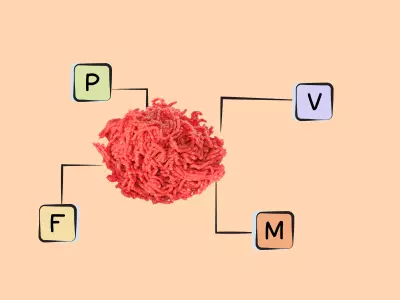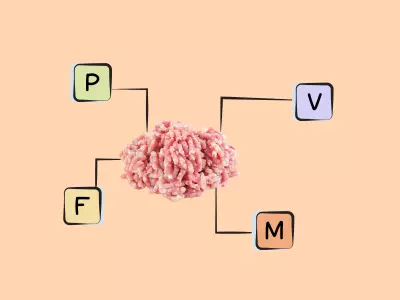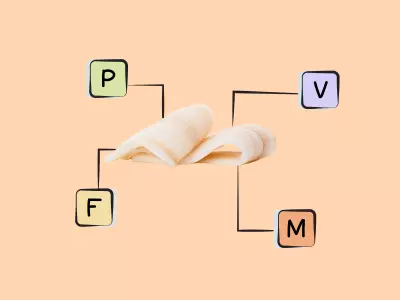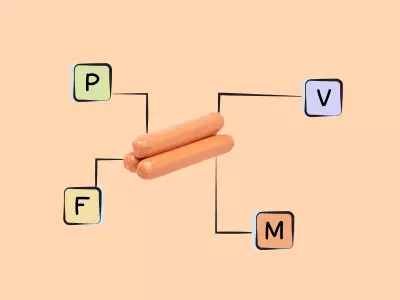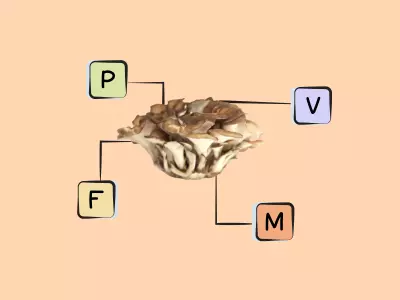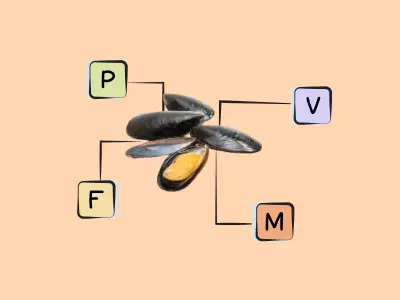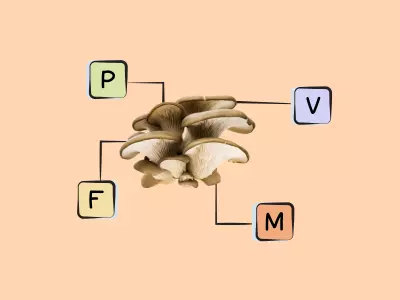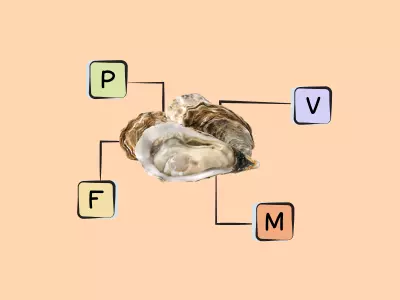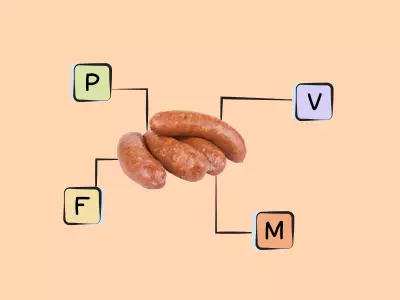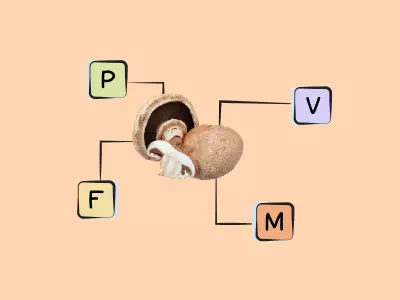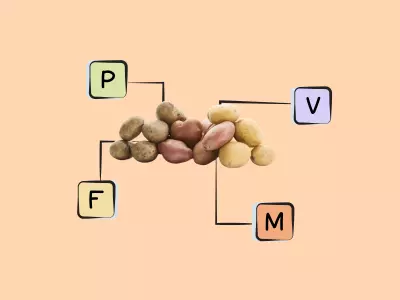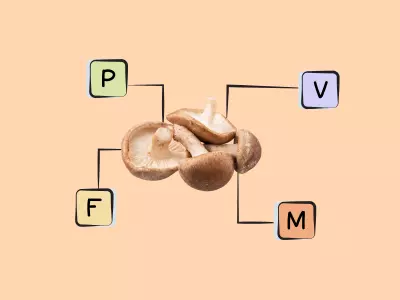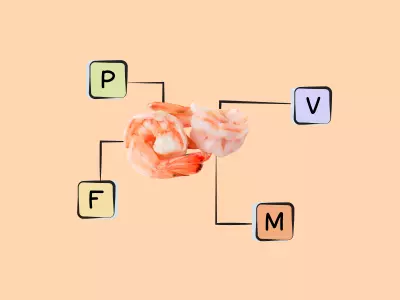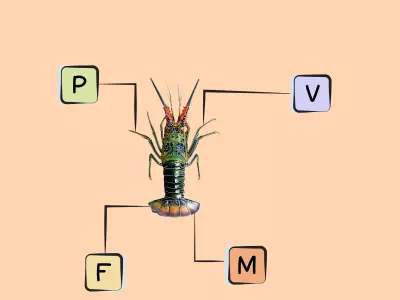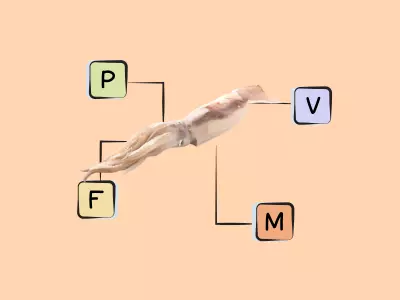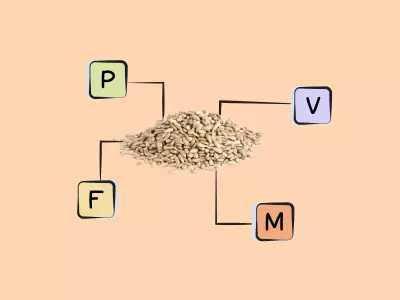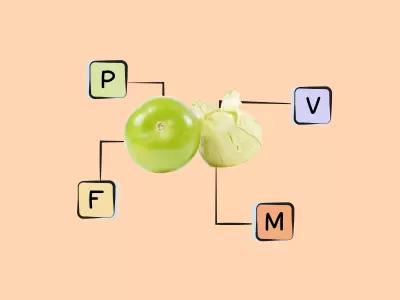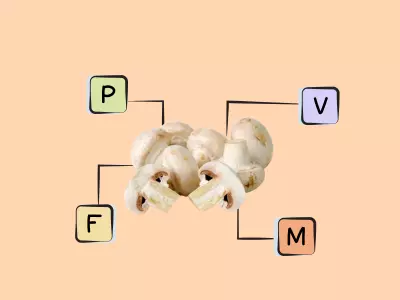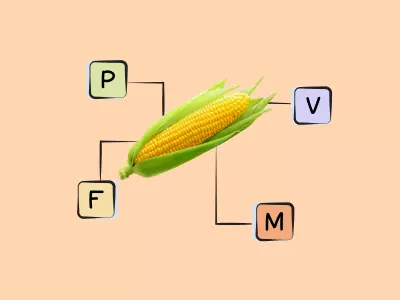Key Takeaways (expand)
- Niacin, or vitamin B3, is a water-soluble vitamin that can be produced from the amino acid tryptophan.
- The term niacin technically refers to several different dietary precursors to the coenzyme nicotinamide adenine dinucleotide; these precursors include nicotinic acid, nicotinamide (or niacinamide), and nicotinamide riboside.
- As with other B vitamins, niacin is involved in energy metabolism, neurotransmitter production, and cellular function.
- Niacin’s most noteworthy function is in forming two important coenzymes: nicotinamide adenine dinucleotide (NAD) and nicotinamide adenine dinucleotide phosphate (NADP).
- Over 400 enzymes require NAD and NADP to carry out their activities, mostly for oxidation-reduction reactions.
- NAD is mainly used in catabolic reactions (especially the breakdown of fats, carbohydrates, proteins, and alcohol); it’s also needed for certain enzymes involved in DNA repair, making it critical for genome stability.
- NADP is involved in anabolic reactions (including synthesizing fatty acids, cholesterol, bile acids, stress hormones, and sex hormones), as well as for regenerating various components of antioxidant and detoxification systems.
- Via its coenzyme role, niacin plays an important role in energy production: during the final step of the Krebs cycle, the reduced form of NAD (NADH) helps deliver electrons to the electron transport chain, leading to ATP production—the energy currency of cells.
- Niacin may play a role in cancer prevention (including leukemia, skin, mouth, breast, throat, and esophageal cancers), largely by influencing pathways that protect DNA and chromosomes from damage.
- High doses of niacin may be therapeutic for cardiovascular disease and hyperlipidemia, with studies showing it can improve blood lipid profiles, reduce plaque formation, and improve endothelial function.
- Human trials have shown that among people with previous cardiovascular events, niacin supplementation can reduce the risk of stroke, heart attack, and overall mortality.
- High-dose niacin appears associated with better health outcomes in HIV patients and schizophrenics.
- Higher blood levels of niacin are associated with a lower risk of developing type 1 diabetes—possibly due to its ability to protect beta-cells from damage, as well as improve their functioning.
- Although true niacin deficiency is uncommon in the modern world, when it does occur, it can lead to reduced cold tolerance, slower metabolism, and most famously, pellagra—a disease characterized by a range of physical and neurological problems including dermatitis, photosensitivity, insomnia, hair loss, weakness, delirium, irritability, anxiety, memory loss, restlessness, and depression.
- Rich sources of niacin include red meat, poultry, salmon, tuna, shellfish, yeast, organ meats, mushrooms, leafy green vegetables, nuts, seeds, and legumes.
Table of Contents[Hide][Show]
Niacin, also called vitamin B3, is a water-soluble vitamin that can be manufactured from the amino acid tryptophan. The term niacin actually refers to a number of dietary precursors to the coenzyme nicotinamide adenine dinucleotide—including nicotinic acid, nicotinamide (sometimes called niacinamide), and nicotinamide riboside. It was first synthesized (in the form of nicotinic acid) from the oxidation of nicotine in 1867, long before the concept of vitamins even existed! It wasn’t until 70 years later, after ongoing efforts to understand and treat a disease called pellagra (which we now know is caused by niacin deficiency), that niacin was finally isolated by the biochemist Conrad Elvehjem and initially named the “pellagra-preventing factor” or vitamin P-P. The nutrient was later renamed niacin from a combination of letters in nicotinic acid and vitamin. And, in 1955, when scientists discovered that consuming large amounts of niacin could reduce cholesterol levels, niacin became the first-ever lipid lowering drug!
Like other B vitamins, it plays an important role in energy metabolism—breaking down the carbohydrates, fat, and protein we eat for use as fuel (hence why B-complex vitamins are often nicknamed the “energy vitamins!”), as well as neurotransmitter production, cellular function, and a wide variety of organ functions.
Good food sources of niacin include red meat, poultry (including chicken and turkey), some seafood (especially salmon and tuna), yeast, organ meat, shellfish, mushrooms, leafy green vegetables, nuts, seeds, and legumes. Many grains and breakfast cereals are also fortified with niacin.
Want to know the top 25 foods for this awesome nutrient?

The Top 25 Foods for Every Nutrient
The Top 25 Foods for Every Nutrient e-book is a well-organized, easy-to-use, grocery store-friendly guide to help you choose foods that fit your needs of 43 important nutrients while creating a balanced nutrient-dense diet.
Get two “Top 25” food lists for each nutrient, plus you’ll find RDA charts for everyone, informative visuals, fun facts, serving sizes and the 58 foods that are Nutrient Super Stars!
Buy now for instant digital access.
The Biological Roles of Vitamin B3 (Niacin)
Niacin is used to form two extremely important coenzymes: nicotinamide adenine dinucleotide (NAD) and nicotinamide adenine dinucleotide phosphate (NADP). Over 400 enzymes are dependent on NAD and NADP, mostly for accepting or donating electrons for oxidation-reduction reactions (which involve the transfer of electrons across a membrane in the mitochondria). NAD is mostly used in catabolic reactions where carbohydrates, fats, proteins, and alcohol are broken down for energy. And, NAD is the sole substrate for the sirtuins and PARP enzymes involved in DNA repair, making this coenzyme (and by extension, niacin) pivotal for genome stability. It also serves as a ligand, binding to membrane receptors of the P2Y subclass (which mediate responses like immune signaling, neuronal activity, vasodilation, and blood clotting).
Meanwhile, NADP has a greater role in anabolic reactions, especially in synthesizing fatty acids, cholesterol, bile acids, stress hormones, and sex hormones. It’s also used for regenerating different components of detoxification and antioxidant systems, and in cytochrome P450 metabolism of endobiotics and xenobiotics.
Like other B vitamins, it also plays an important role in energy metabolism—particularly the second stage of cellular respiration, called the Krebs cycle or citric acid cycle. The Krebs cycle is an incredibly important series of chemical reactions that all aerobic organisms use to generate energy, through an eight-step process taking place in a cell’s mitochondria. During this cycle, acetate (in the form of acetyl CoA) derived from carbohydrates, fat, or protein undergoes a series of redox, dehydration, hydration, and decarboxylation reactions to produce adenosine triphosphate (ATP), the energy currency for all cells—as well as the waste product carbon dioxide, and reduced forms of NADH and FADH2 (which can then be converted into yet more ATP in the last step of the Krebs cycle: oxidative phosphorylation in the electron transport chain). This is complex biochemistry, but the important part here is that there are a whole lot of chemical reactions required to produce energy for our cells, and B vitamins are essential for that process!
Niacin’s specific role in this cycle is through the formation of NAD, which gets reduced to NADH after picking up two hydrogen electrons. In turn, NADH serves as an energy shuttle to deliver electrons to the electron transport chain in the final step of the Krebs cycle, powering the production of two or three molecules of ATP. So, niacin is absolutely vital for the production of cellular energy!
Drug Interactions with Vitamin B3 (Niacin)
Niacin also has some important interactions with drugs. For example, niacin is often prescribed in conjunction with statins, but this co-administration can sometimes increase the risk of rhabdomyolosis—a condition where muscle cells break down, causing a release of enzymes and electrolytes into the blood and sometimes leading to kidney failure. Other studies suggest that combining antioxidant supplementation (vitamin C, vitamin E, selenium, and beta-carotene) with niacin-statin therapy (particularly nicotinic acid along with the statin simvastatin) may reduce the effectiveness of the niacin-statin therapy, although the mechanism is currently unknown. Combining nicotinic acid with cholestyramine or colestipol (bile acid sequestering drugs) or gemfibrozil (a cholesterol-lowering drug) may increase the risk of myopathy, and combining nicotinic acid with paracetamol, amiodarone, or carbamazepine may increase the risk of liver toxicity. And, taking estrogen or estrogen-containing contraceptives can enhance the efficiency of synthesizing niacin from tryptophan and reduce the body’s dietary needs for this nutrient.
Vitamin B3 (Niacin) in Health and Disease
Vitamin B3 (niacin) may have protective effects for a variety of chronic diseases. Niacin has potential anti-cancer properties, due to its ability to influence pathways that protect chromosomes and DNA from damage; human studies show it may help protect against leukemia, skin cancer, breast cancer, throat cancer, mouth cancer, and esophageal cancer. It also has established blood-lipid-lowering effects, and may benefit cardiovascular health through several other avenues as well—including reducing plaque buildup and improving endothelial function. It may also help improve beta-cell function in people at risk of type 1 diabetes, as well as benefit patients with HIV and schizophrenia.
Niacin and Cancer
Some evidence suggests niacin could play a role in cancer prevention—largely through its influence on mechanisms that protect DNA and chromosomes from damage. By helping maintain an abundant pool of NAD, niacin allows important cancer-protective reactions to take place, including poly ADP-ribosylations catalyzed by PARP enzymes (which are critical for responding to DNA injury). NAD depletion has also been shown to reduce levels of the tumor suppressor protein p53 in human breast cells, lung cells, skin cells, and rodent bone marrow cells—suggesting that adequate niacin is involved in keeping this protein at high enough levels to do its anti-cancer work (including initiating DNA repair and inducing apoptosis)!
Across studies, niacin has also been shown to affect leukemia risk in rats, to potentially reduce the risk of mouth, throat, and esophageal cancers in humans (a 40% decrease in cancer risk with each 5.2 – 6.2 mg increase in daily niacin intake, according to case-control studies), and protect against squamous-cell and basal-cell carcinomas in people with a history of nonmelanoma skin cancers (a 30% and 20% reduction in risk, respectively, after a year of daily nicotinamide supplementation). And even in people without a history of skin cancer, large prospective cohort studies have found that adults with the highest versus lowest intake of niacin appear to have a lower risk of developing squamous-cell carcinoma over the course of many years.
Niacin and Cardiovascular Disease
Very high doses of niacin have also been used for the treatment of hyperlipidemia (high cholesterol and triglycerides) and cardiovascular disease; in fact, this is a common practice that has been employed by doctors since the 1950s! More specifically, niacin supplementation (in the form of nicotinic acid) can reduce serum very low-density lipoprotein (VLDL) cholesterol and LDL cholesterol, lower triglycerides and lipoprotein(A) (a cholesterol-transporting protein associated with higher likelihood of plaque and blood clots forming in the arteries), and increase HDL cholesterol (AKA “good”cholesterol)—while also helping reduce plaque formation in our blood vessels.
These lipid-therapeutic properties still aren’t fully understood, but we do know that they’re partly mediated through the activation of G protein-coupled receptors—particularly hydroxycarboxylic acid receptor 2 (HCA2) and hydroxycarboxylic acid receptor 3 (HCA3), which suppress the release of free fatty acids from body fat, in turn reducing the amount of building blocks available for the liver to use for cholesterol synthesis. This reduction in free fatty acids also suppresses the expression of certain proteins in the liver (apolipoprotein C3 and PPARg coactivator-1b), leading to reduced production and increased turnover of VLDL. When it comes to niacin’s effects on HDL, it’s much more of a mystery! However, niacin has been shown to raise levels of apolipoprotein A1 (a component of HDL) by preventing its breakdown, and also inhibits the uptake of HDL by the liver by suppressing production of the cholesterol ester transfer protein gene.
Additionally, niacin may have lipid-modulating effects through other mechanisms, such as lowering inflammation, reducing oxidative stress, and regulating cell adhesion, differentiation, and migration. A number of randomized controlled trials have even shown that niacin supplementation can significantly improve flow-mediated dilation (a surrogate measure of endothelial function) in people who either have cardiovascular disease or are at high risk of developing it.
Some clinical trials, especially in people with previous cardiovascular events, have shown that niacin supplementation (2 – 3 grams a day) reduces the risk of stroke, the recurrence of myocardial infarctions, and overall mortality. That being said, despite its beneficial effects on blood lipid profiles and the success of a handful of trials, systematic reviews haven’t found an overall protective effect of prescription niacin on all-cause mortality, heart attacks, strokes, or overall heart disease deaths.
Niacin and Acne
Niacin may have a beneficial effect on acne. Although most trials have used topically applied niacin for the treatment of acne, a 2017 review found that oral niacin (in the form of nicotinamide) significantly improved patients’ acne compared to baseline.
Niacin and Fatigue
Niacin may also be beneficial for fatigue, due its role in energy production (particularly as NAD). However, more studies are needed in humans to test the effects of dietary niacin, and at what intakes, on symptoms of physical fatigue.
Niacin and Alzheimer’s Disease
Some research has pointed to potential protective effects of niacin on Alzheimer’s disease. For example, a 2004 prospective study of older adults found that compared to people with the lowest quintile of niacin intake, those with higher intakes had a 40 to 70% lower risk of developing Alzheimer’s disease over time, even after adjusting for potential confounders. Likewise, higher intake of niacin from food was associated with slower rates of cognitive decline each year.
Animal models of Alzheimer’s disease have also shown that niacin supplementation can beneficially affect the hub genes and pathways involved in the cognition. Although the findings would need to be replicated in humans, this suggests niacin could be useful in the prevention and treatment of Alzheimer’s.
Niacin and Other Health Conditions
Research also shows that treatment with high-dose niacin could be associated with better outcomes in patients with HIV (including cardiovascular disease risk among this population), as well as in patients with schizophrenia.
Studies have shown an association between serum nicotinamide and reduced risk of developing type 1 diabetes, with animal experiments also showing that administration of nicotinamide can protect beta-cells from damage. Human studies have likewise shown that niacin supplementation can improve beta-cell function among people at high risk of type 1 diabetes (as well as improving inflammation-related parameters), but failed to show a clear benefit for improving glycemic control or reducing actual disease onset.
Didn’t know vitamin B3 was this amazing? Maybe your friends will enjoy this too!
Health Effects of Vitamin B3 (Niacin) Deficiency
As with other B vitamins, true clinical vitamin B3 deficiency isn’t common in the modern world, and rarely happens in isolation (that is, if you’re deficient in niacin, you’re probably deficient in other water-soluble vitamins too!). When it does occur, niacin deficiency is generally a result of poor dietary intake, alcoholism, defective tryptophan absorption, long-term chemotherapy use, a high consumption of non-nixtamalized corn (due to its niacin not being bioavailable), or metabolic disorders.
Mild niacin deficiency can lead to slower metabolism and reduced cold tolerance. But, the most famous result of niacin deficiency is a disease called pellagra—characterized by dermatitis, diarrhea, photosensitivity, insomnia, hair loss, tongue inflammation, weakness, and neurological changes like dementia, delirium, irritability, anxiety, memory loss, restlessness, depression, apathy, and other emotional disturbances. Although less common today, pellagra was endemic in Europe in the 1700s due to widespread corn cultivation: while corn in the Americas was traditionally prepared with methods that made the niacin become bioavailable (namely, a process called nixtamalization, which involves pre-treating the corn with an alkali ingredient like lime), those methods didn’t carry over to Europe, and corn-eating populations were left unknowingly niacin deficient.
Fascinatingly, there’s reason to believe that niacin deficiency contributed to origin of vampire folklore: pellagra symptoms resemble many attributes ascribed to vampires (including sensitivity to sunlight, insomnia, erratic behavior, aggression, and delirium), and vampire legends famously arose from corn-eating areas of Eastern Europe around the same time pellagra was striking those regions!
Everything You Need to Jump into Nutrivore TODAY!
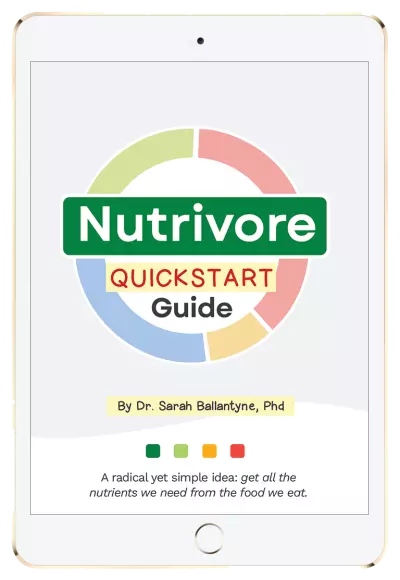
Nutrivore Quickstart Guide
The Nutrivore Quickstart Guide e-book explains why and how to eat a Nutrivore diet, introduces the Nutrivore Score, gives a comprehensive tour of the full range of essential and important nutrients!
Plus, you’ll find the Top 100 Nutrivore Score Foods, analysis of food groups, practical tips to increase the nutrient density of your diet, and look-up tables for the Nutrivore Score of over 700 foods.
Buy now for instant digital access.
Problems From Too Much Vitamin B3 (Niacin)
It’s worth noting that while reaching side-effect-causing levels of niacin is almost impossible through diet alone, high therapeutic doses (typically 1 to 3 grams daily) can produce side effects such as transient flushing, severe itching, rashes, low blood pressure, headache, and and gastrointestinal upset (like nausea and vomiting). These symptoms can often be reduced by consuming niacin supplements with a meal, slowly increasing the dosage over time, or choosing slow-release forms of niacin. Supplemental doses as low as 750 mg per day of nicotinic acid have even led to liver damage in some people. And, severe hepatitis has been linked to doses of 3 to 9 g daily taken for many months or years as a high cholesterol treatment. Studies have even suggested a potential increased risk of new-onset type 2 diabetes as a result of such treatments. (The diabetes-promoting effect may be due to large doses of niacin decreasing insulin sensitivity and impairing glucose tolerance, leading to elevated blood sugar and spurring the development of diabetes in people who were already predisposed.)
Likewise, people with gout, peptic ulcer disease, a history of liver disease or abnormal liver function, cardiac arrhythmias, migraines, alcoholism, or inflammatory bowel disease may be more likely to experience adverse reactions to niacin supplementation than the rest of the population, and nursing women are advised to avoid prescription niacin products due to unknown effects on the nursing infant.
So, while getting abundant dietary niacin is an excellent goal, caution is warranted when consuming large therapeutic doses, and should only be done under the guidance of a healthcare provider!
How Much Vitamin B3 (Niacin) Do We Need?
The recommended daily allowance (RDA) for niacin is 14 mg per day for women (18 mg daily while pregnant, and 17 mg daily while breastfeeding/lactating) and 16 mg of niacin per day for men. Most people are likely meeting this RDA as long as they consume adequate animal protein: the average dietary intake of niacin is approximately 25 mg per day, and the foods highest in niacin are also rich in the amino acid tryptophan, which can can be further converted into niacin.
| 0 – 6 months | |||||
| 6 months to < 12 months | |||||
| 1 yr – 3 yrs | |||||
| 4 yrs – 8 yrs | |||||
| 9 yrs – 13 yrs | |||||
| 14 yrs – 18 yrs | |||||
| 19 yrs – 50 yrs | |||||
| 51+ yrs | |||||
| Pregnant (14 – 18 yrs) | |||||
| Pregnant (19 – 30 yrs) | |||||
| Pregnant (31 – 50 yrs) | |||||
| Lactating (14 – 18 yrs) | |||||
| Lactating (19 – 30 yrs) | |||||
| Lactating (31 – 50 yrs) |
Nutrient Daily Values
Nutrition requirements and recommended nutrient intake for infants, children, adolescents, adults, mature adults, and pregnant and lactating individuals.
Ready to Make Healthy Eating Feel Effortless?

Join the FREE 90-day Nutrivore90 Challenge and build lasting habits with no food rules, no guilt—just real progress.
- Weekly downloads, journal prompts, and reflection tools—all completely free.
- Focus on nutrient density, not restriction
- Nutrivore90 starts January 5th, 2026!
Best Food Sources of Vitamin B3 (Niacin)
The following foods have high concentrations of niacin, containing at least 50% of the recommended dietary allowance per serving, making them our best food sources of this valuable B-vitamin!
Want to know the top 500 most nutrient-dense foods?

Top 500 Nutrivore Foods
The Top 500 Nutrivore Foods e-book is an amazing reference deck of the top 500 most nutrient-dense foods according to their Nutrivore Score. Think of it as the go-to resource for a super-nerd, to learn more and better understand which foods stand out, and why!
If you are looking for a quick-reference guide to help enhance your diet with nutrients, and dive into the details of your favorite foods, this book is your one-stop-shop!
Buy now for instant digital access.
Good Food Sources of Vitamin B3 (Niacin)
The following foods are also excellent or good sources of niacin, containing at least 10% (and up to 50%) of the daily value per serving.
Easily track your servings of Nutrivore Foundational Foods!

The Nutrivore Weekly Serving Matrix
The Nutrivore Weekly Serving Matrix digital resource is an easy-to-use and flexible weekly checklist designed to help you maximize nutrient-density and meet serving suggestions of Nutrivore foundational foods, all without having to weigh or measure your foods!
Includes a 22-page instructional guide and downloadable interactive guides.
Buy now for instant digital access.
Citations
Expand to see all scientific references for this article.
Agledal L, Niere M, Ziegler M. The phosphate makes a difference: cellular functions of NADP. Redox Rep. 2010;15(1):2-10. doi: 10.1179/174329210X12650506623122.
Badawy AA. Pellagra and alcoholism: a biochemical perspective. Alcohol Alcohol. 2014 May-Jun;49(3):238-50. doi: 10.1093/alcalc/agu010.
Bays HE, Shah A, Lin J, Sisk CM, Dong Q, Maccubbin D. Consistency of extended-release niacin/laropiprant effects on Lp(a), ApoB, non-HDL-C, Apo A1, and ApoB/ApoA1 ratio across patient subgroups. Am J Cardiovasc Drugs. 2012 Jun 1;12(3):197-206. doi: 10.2165/11631530-000000000-00000.
Benavente CA, Jacobson EL. Niacin restriction upregulates NADPH oxidase and reactive oxygen species (ROS) in human keratinocytes. Free Radic Biol Med. 2008 Feb 15;44(4):527-37. doi: 10.1016/j.freeradbiomed.2007.10.006.
Bermudez Y, Benavente CA, Meyer RG, Coyle WR, Jacobson MK, Jacobson EL. Nicotinic acid receptor abnormalities in human skin cancer: implications for a role in epidermal differentiation. PLoS One. 2011;6(5):e20487. doi: 10.1371/journal.pone.0020487.
Boden WE, Sidhu MS, Toth PP. The therapeutic role of niacin in dyslipidemia management. J Cardiovasc Pharmacol Ther. 2014 Mar;19(2):141-58. doi: 10.1177/1074248413514481.
Boyonoski AC, Spronck JC, Jacobs RM, Shah GM, Poirier GG, Kirkland JB. Pharmacological intakes of niacin increase bone marrow poly(ADP-ribose) and the latency of ethylnitrosourea-induced carcinogenesis in rats. J Nutr. 2002 Jan;132(1):115-20. doi: 10.1093/jn/132.1.115.
Brown BG, Zhao XQ, Chait A, Fisher LD, Cheung MC, Morse JS, Dowdy AA, Marino EK, Bolson EL, Alaupovic P, Frohlich J, Albers JJ. Simvastatin and niacin, antioxidant vitamins, or the combination for the prevention of coronary disease. N Engl J Med. 2001 Nov 29;345(22):1583-92. doi: 10.1056/NEJMoa011090.
Bürkle A. Poly(ADP-ribose). The most elaborate metabolite of NAD+. FEBS J. 2005 Sep;272(18):4576-89. doi: 10.1111/j.1742-4658.2005.04864.x.
Canner PL, Berge KG, Wenger NK, Stamler J, Friedman L, Prineas RJ, Friedewald W. Fifteen year mortality in Coronary Drug Project patients: long-term benefit with niacin. J Am Coll Cardiol. 1986 Dec;8(6):1245-55. doi: 10.1016/s0735-1097(86)80293-5.
Chen AC, Martin AJ, Choy B, Fernández-Peñas P, Dalziell RA, McKenzie CA, Scolyer RA, Dhillon HM, Vardy JL, Kricker A, St George G, Chinniah N, Halliday GM, Damian DL. A Phase 3 Randomized Trial of Nicotinamide for Skin-Cancer Chemoprevention. N Engl J Med. 2015 Oct 22;373(17):1618-26. doi: 10.1056/NEJMoa1506197.
Chow DC, Stein JH, Seto TB, Mitchell C, Sriratanaviriyakul N, Grandinetti A, Gerschenson M, Shiramizu B, Souza S, Shikuma C. Short-term effects of extended-release niacin on endothelial function in HIV-infected patients on stable antiretroviral therapy. AIDS. 2010 Apr 24;24(7):1019-23. doi: 10.1097/QAD.0b013e3283383016.
Dawson B, Favaloro EJ, Taylor J, Aggarwal A. Unrecognized pellagra masquerading as odynophagia. Intern Med J. 2006 Jul;36(7):472-4. doi: 10.1111/j.1445-5994.2006.01108.x.
Fliegert R, Bauche A, Wolf Pérez AM, Watt JM, Rozewitz MD, Winzer R, Janus M, Gu F, Rosche A, Harneit A, Flato M, Moreau C, Kirchberger T, Wolters V, Potter BVL, Guse AH. 2′-Deoxyadenosine 5′-diphosphoribose is an endogenous TRPM2 superagonist. Nat Chem Biol. 2017 Sep;13(9):1036-1044. doi: 10.1038/nchembio.2415.
Franceschi S, Bidoli E, Negri E, Zambon P, Talamini R, Ruol A, Parpinel M, Levi F, Simonato L, La Vecchia C. Role of macronutrients, vitamins and minerals in the aetiology of squamous-cell carcinoma of the oesophagus. Int J Cancer. 2000 Jun 1;86(5):626-31. doi: 10.1002/(sici)1097-0215(20000601)86:5<626::aid-ijc4>3.0.co;2-y.
Gale EA, Bingley PJ, Emmett CL, Collier T; European Nicotinamide Diabetes Intervention Trial (ENDIT) Group. European Nicotinamide Diabetes Intervention Trial (ENDIT): a randomised controlled trial of intervention before the onset of type 1 diabetes. Lancet. 2004 Mar 20;363(9413):925-31. doi: 10.1016/S0140-6736(04)15786-3.
Gasperi V, Sibilano M, Savini I, Catani MV. Niacin in the Central Nervous System: An Update of Biological Aspects and Clinical Applications. Int J Mol Sci. 2019 Feb 23;20(4):974. doi: 10.3390/ijms20040974.
Gensler HL, Williams T, Huang AC, Jacobson EL. Oral niacin prevents photocarcinogenesis and photoimmunosuppression in mice. Nutr Cancer. 1999;34(1):36-41. doi: 10.1207/S15327914NC340105.
Graff EC, Fang H, Wanders D, Judd RL. Anti-inflammatory effects of the hydroxycarboxylic acid receptor 2. Metabolism. 2016 Feb;65(2):102-13. doi: 10.1016/j.metabol.2015.10.001.
Hageman GJ, Stierum RH, van Herwijnen MH, van der Veer MS, Kleinjans JC. Nicotinic acid supplementation: effects on niacin status, cytogenetic damage, and poly(ADP-ribosylation) in lymphocytes of smokers. Nutr Cancer. 1998;32(2):113-20. doi: 10.1080/01635589809514728.
Hwang ES, Song SB. Nicotinamide is an inhibitor of SIRT1 in vitro, but can be a stimulator in cells. Cell Mol Life Sci. 2017 Sep;74(18):3347-3362. doi: 10.1007/s00018-017-2527-8.
Institute of Medicine (US) Standing Committee on the Scientific Evaluation of Dietary Reference Intakes and its Panel on Folate, Other B Vitamins, and Choline. Dietary Reference Intakes for Thiamin, Riboflavin, Niacin, Vitamin B6, Folate, Vitamin B12, Pantothenic Acid, Biotin, and Choline. Washington (DC): National Academies Press (US); 1998.
Jacobson EL, Shieh WM, Huang AC. Mapping the role of NAD metabolism in prevention and treatment of carcinogenesis. Mol Cell Biochem. 1999 Mar;193(1-2):69-74.
Jacobson EL. Niacin deficiency and cancer in women. J Am Coll Nutr. 1993 Aug;12(4):412-6. doi: 10.1080/07315724.1993.10718330.
Jagielska G, Tomaszewicz-Libudzic EC, Brzozowska A. Pellagra: a rare complication of anorexia nervosa. Eur Child Adolesc Psychiatry. 2007 Oct;16(7):417-20. doi: 10.1007/s00787-007-0613-4.
Jin FY, Kamanna VS, Kashyap ML. Niacin accelerates intracellular ApoB degradation by inhibiting triacylglycerol synthesis in human hepatoblastoma (HepG2) cells. Arterioscler Thromb Vasc Biol. 1999 Apr;19(4):1051-9. doi: 10.1161/01.atv.19.4.1051.
Kamanna VS, Ganji SH, Kashyap ML. Recent advances in niacin and lipid metabolism. Curr Opin Lipidol. 2013 Jun;24(3):239-45. doi: 10.1097/MOL.0b013e3283613a68.
Kawai S, Murata K. Structure and function of NAD kinase and NADP phosphatase: key enzymes that regulate the intracellular balance of NAD(H) and NADP(H). Biosci Biotechnol Biochem. 2008 Apr;72(4):919-30. doi: 10.1271/bbb.70738.
Kirkland JB. Niacin requirements for genomic stability. Mutat Res. 2012 May 1;733(1-2):14-20. doi: 10.1016/j.mrfmmm.2011.11.008.
Klein C, Grahnert A, Abdelrahman A, Müller CE, Hauschildt S. Extracellular NAD(+) induces a rise in [Ca(2+)](i) in activated human monocytes via engagement of P2Y(1) and P2Y(11) receptors. Cell Calcium. 2009 Oct;46(4):263-72. doi: 10.1016/j.ceca.2009.08.004.
Kostecki LM, Thomas M, Linford G, Lizotte M, Toxopeus L, Bartleman AP, Kirkland JB. Niacin deficiency delays DNA excision repair and increases spontaneous and nitrosourea-induced chromosomal instability in rat bone marrow. Mutat Res. 2007 Dec 1;625(1-2):50-61. doi: 10.1016/j.mrfmmm.2007.05.008.
Lampeter EF, Klinghammer A, Scherbaum WA, Heinze E, Haastert B, Giani G, Kolb H. The Deutsche Nicotinamide Intervention Study: an attempt to prevent type 1 diabetes. DENIS Group. Diabetes. 1998 Jun;47(6):980-4. doi: 10.2337/diabetes.47.6.980.
Liu C, Yu X. ADP-ribosyltransferases and poly ADP-ribosylation. Curr Protein Pept Sci. 2015;16(6):491-501. doi: 10.2174/1389203716666150504122435.
Markel A. The resurgence of niacin: from nicotinic acid to niaspan/laropiprant. Isr Med Assoc J. 2011 Jun;13(6):368-74.
Messamore E. Niacin subsensitivity is associated with functional impairment in schizophrenia. Schizophr Res. 2012 May;137(1-3):180-4. doi: 10.1016/j.schres.2012.03.001.
Minocha R, Damian DL, Halliday GM. Melanoma and nonmelanoma skin cancer chemoprevention: A role for nicotinamide? Photodermatol Photoimmunol Photomed. 2018 Jan;34(1):5-12. doi: 10.1111/phpp.12328.
Minto C, Vecchio MG, Lamprecht M, Gregori D. Definition of a tolerable upper intake level of niacin: a systematic review and meta-analysis of the dose-dependent effects of nicotinamide and nicotinic acid supplementation. Nutr Rev. 2017 Jun 1;75(6):471-490. doi: 10.1093/nutrit/nux011.
Moreschi I, Bruzzone S, Nicholas RA, Fruscione F, Sturla L, Benvenuto F, Usai C, Meis S, Kassack MU, Zocchi E, De Flora A. Extracellular NAD+ is an agonist of the human P2Y11 purinergic receptor in human granulocytes. J Biol Chem. 2006 Oct 20;281(42):31419-29. doi: 10.1074/jbc.M606625200.
Morris BJ. Seven sirtuins for seven deadly diseases of aging. Free Radic Biol Med. 2013 Mar;56:133-71. doi: 10.1016/j.freeradbiomed.2012.10.525.
Morris MC, Evans DA, Bienias JL, Scherr PA, Tangney CC, Hebert LE, Bennett DA, Wilson RS, Aggarwal N. Dietary niacin and the risk of incident Alzheimer’s disease and of cognitive decline. J Neurol Neurosurg Psychiatry. 2004 Aug;75(8):1093-9. doi: 10.1136/jnnp.2003.025858.
Murphy SP, White KK, Park SY, Sharma S. Multivitamin-multimineral supplements’ effect on total nutrient intake. Am J Clin Nutr. 2007 Jan;85(1):280S-284S. doi: 10.1093/ajcn/85.1.280S.
Mutafova-Yambolieva VN, Hwang SJ, Hao X, Chen H, Zhu MX, Wood JD, Ward SM, Sanders KM. Beta-nicotinamide adenine dinucleotide is an inhibitory neurotransmitter in visceral smooth muscle. Proc Natl Acad Sci U S A. 2007 Oct 9;104(41):16359-64. doi: 10.1073/pnas.0705510104.
Negri E, Franceschi S, Bosetti C, Levi F, Conti E, Parpinel M, La Vecchia C. Selected micronutrients and oral and pharyngeal cancer. Int J Cancer. 2000 Apr 1;86(1):122-7. doi: 10.1002/(sici)1097-0215(20000401)86:1<122::aid-ijc19>3.0.co;2-2.
Niacin: Fact Sheet For Health Professionals. National Institutes of Health (NIH) Office of Dietary Supplements. 23 Aug 2022.
Nikiforov A, Kulikova V, Ziegler M. The human NAD metabolome: Functions, metabolism and compartmentalization. Crit Rev Biochem Mol Biol. 2015;50(4):284-97. doi: 10.3109/10409238.2015.1028612.
Nogueira A, Duarte AF, Magina S, Azevedo F. Pellagra associated with esophageal carcinoma and alcoholism. Dermatol Online J. 2009 May 15;15(5):8.
Orban T, Sosenko JM, Cuthbertson D, Krischer JP, Skyler JS, Jackson R, Yu L, Palmer JP, Schatz D, Eisenbarth G; Diabetes Prevention Trial-Type 1 Study Group. Pancreatic islet autoantibodies as predictors of type 1 diabetes in the Diabetes Prevention Trial-Type 1. Diabetes Care. 2009 Dec;32(12):2269-74. doi: 10.2337/dc09-0934.
Park SM, Li T, Wu S, Li WQ, Weinstock M, Qureshi AA, Cho E. Niacin intake and risk of skin cancer in US women and men. Int J Cancer. 2017 May 1;140(9):2023-2031. doi: 10.1002/ijc.30630.
Pieper JA. Understanding niacin formulations. Am J Manag Care. 2002 Sep;8(12 Suppl):S308-14.
Prakash R, Gandotra S, Singh LK, Das B, Lakra A. Rapid resolution of delusional parasitosis in pellagra with niacin augmentation therapy. Gen Hosp Psychiatry. 2008 Nov-Dec;30(6):581-4. doi: 10.1016/j.genhosppsych.2008.04.011.
Sahebkar A. Effect of niacin on endothelial function: a systematic review and meta-analysis of randomized controlled trials. Vasc Med. 2014 Feb;19(1):54-66. doi: 10.1177/1358863X13515766.
Sazonov V, Maccubbin D, Sisk CM, Canner PL. Effects of niacin on the incidence of new onset diabetes and cardiovascular events in patients with normoglycaemia and impaired fasting glucose. Int J Clin Pract. 2013 Apr;67(4):297-302. doi: 10.1111/ijcp.12089.
Schandelmaier S, Briel M, Saccilotto R, Olu KK, Arpagaus A, Hemkens LG, Nordmann AJ. Niacin for primary and secondary prevention of cardiovascular events. Cochrane Database Syst Rev. 2017 Jun 14;6(6):CD009744. doi: 10.1002/14651858.CD009744.pub2.
Shi H, Enriquez A, Rapadas M, Martin EMMA, Wang R, Moreau J, Lim CK, Szot JO, Ip E, Hughes JN, Sugimoto K, Humphreys DT, McInerney-Leo AM, Leo PJ, Maghzal GJ, Halliday J, Smith J, Colley A, Mark PR, Collins F, Sillence DO, Winlaw DS, Ho JWK, Guillemin GJ, Brown MA, Kikuchi K, Thomas PQ, Stocker R, Giannoulatou E, Chapman G, Duncan EL, Sparrow DB, Dunwoodie SL. NAD Deficiency, Congenital Malformations, and Niacin Supplementation. N Engl J Med. 2017 Aug 10;377(6):544-552. doi: 10.1056/NEJMoa1616361.
Souza SA, Chow DC, Walsh EJ, Ford S 3rd, Shikuma C. Pilot study on the safety and tolerability of extended release niacin for HIV-infected patients with hypertriglyceridemia. Hawaii Med J. 2010 May;69(5):122-5.
Spronck JC, Nickerson JL, Kirkland JB. Niacin deficiency alters p53 expression and impairs etoposide-induced cell cycle arrest and apoptosis in rat bone marrow cells. Nutr Cancer. 2007;57(1):88-99. doi: 10.1080/01635580701268337.
Tardy AL, Pouteau E, Marquez D, Yilmaz C, Scholey A. Vitamins and Minerals for Energy, Fatigue and Cognition: A Narrative Review of the Biochemical and Clinical Evidence. Nutrients. 2020 Jan 16;12(1):228. doi: 10.3390/nu12010228.
Taylor AJ, Sullenberger LE, Lee HJ, Lee JK, Grace KA. Arterial Biology for the Investigation of the Treatment Effects of Reducing Cholesterol (ARBITER) 2: a double-blind, placebo-controlled study of extended-release niacin on atherosclerosis progression in secondary prevention patients treated with statins. Circulation. 2004 Dec 7;110(23):3512-7. doi: 10.1161/01.CIR.0000148955.19792.8D.
Taylor AJ, Zhu D, Sullenberger LE, Lee HJ, Lee JK, Grace KA. Relationship between glycemic status and progression of carotid intima-media thickness during treatment with combined statin and extended-release niacin in ARBITER 2. Vasc Health Risk Manag. 2007;3(1):159-64.
Trammell SA, Schmidt MS, Weidemann BJ, Redpath P, Jaksch F, Dellinger RW, Li Z, Abel ED, Migaud ME, Brenner C. Nicotinamide riboside is uniquely and orally bioavailable in mice and humans. Nat Commun. 2016 Oct 10;7:12948. doi: 10.1038/ncomms12948.
Walocko FM, Eber AE, Keri JE, Al-Harbi MA, Nouri K. The role of nicotinamide in acne treatment. Dermatol Ther. 2017 Sep;30(5). doi: 10.1111/dth.12481.
Wang Z, Zou Z, Li Q. Nicotinic acid supplementation contributes to the amelioration of Alzheimer’s disease in mouse models. Ann Transl Med. 2022 Oct;10(19):1049. doi: 10.21037/atm-22-1148.
Weidele K, Beneke S, Bürkle A. The NAD+ precursor nicotinic acid improves genomic integrity in human peripheral blood mononuclear cells after X-irradiation. DNA Repair (Amst). 2017 Apr;52:12-23. doi: 10.1016/j.dnarep.2017.02.001.
Weitberg AB. Effect of nicotinic acid supplementation in vivo on oxygen radical-induced genetic damage in human lymphocytes. Mutat Res. 1989 Aug;216(4):197-201. doi: 10.1016/0165-1161(89)90005-8.
Wink J, Giacoppe G, King J. Effect of very-low-dose niacin on high-density lipoprotein in patients undergoing long-term statin therapy. Am Heart J. 2002 Mar;143(3):514-8. doi: 10.1067/mhj.2002.120158.
Yong LC, Petersen MR. High dietary niacin intake is associated with decreased chromosome translocation frequency in airline pilots. Br J Nutr. 2011 Feb;105(4):496-505. doi: 10.1017/S000711451000379X.
Zhao XQ, Morse JS, Dowdy AA, Heise N, DeAngelis D, Frohlich J, Chait A, Albers JJ, Brown BG. Safety and tolerability of simvastatin plus niacin in patients with coronary artery disease and low high-density lipoprotein cholesterol (The HDL Atherosclerosis Treatment Study). Am J Cardiol. 2004 Feb 1;93(3):307-12. doi: 10.1016/j.amjcard.2003.10.009.



